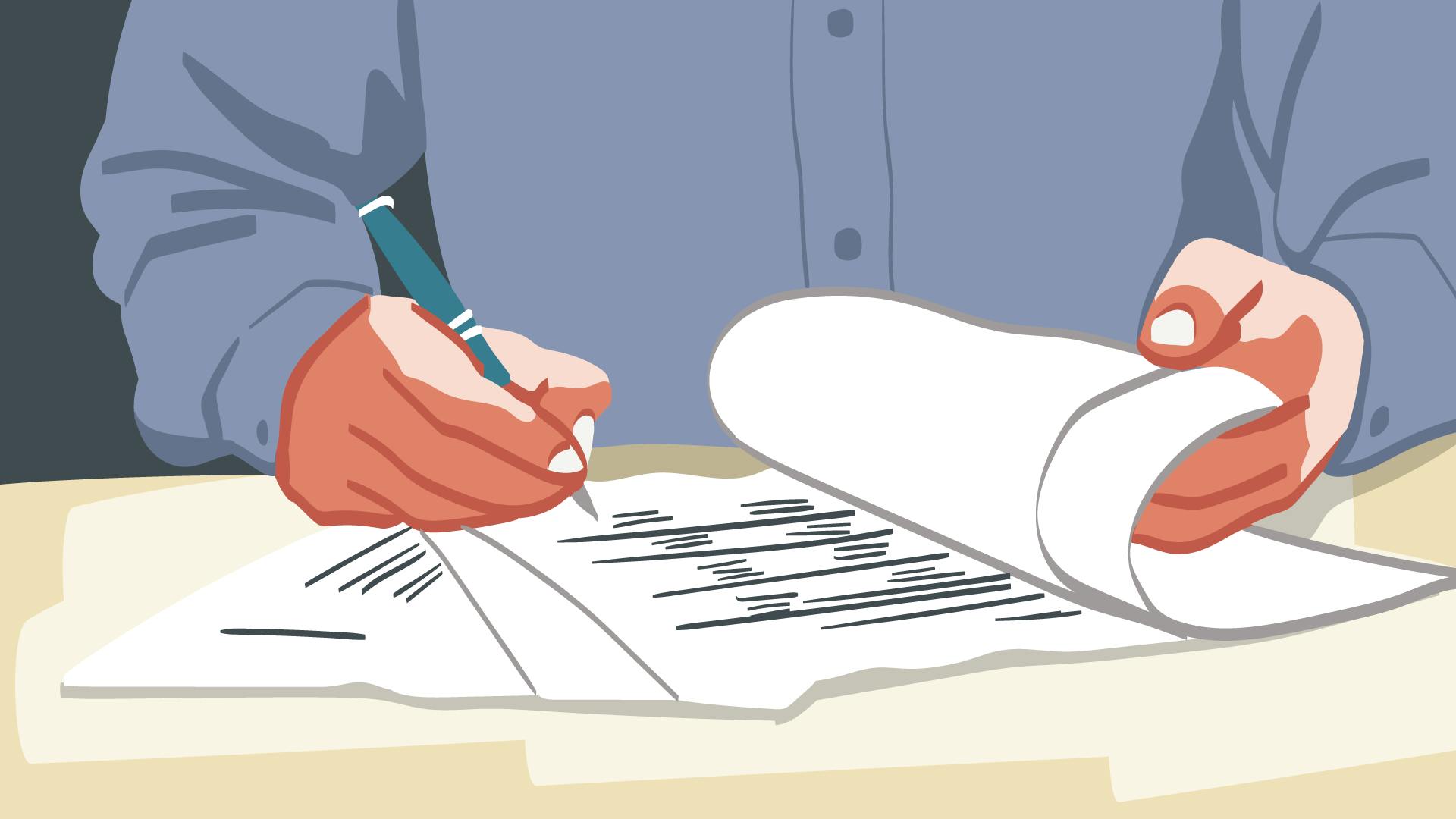Invoice Basics for Freelancers
Last updated on Jun 12, 2022
Kate Bailey
Freelance Editor
Mar 25, 2019
Payday has arrived!
Yay! You’ve got clients on the books, you’re working at your chosen profession, you’ve networked, you’ve interviewed and now you’re ready to earn money in exchange for your services. Huh, you’re a freelancer!? Like all matters of finance and tax in Germany there are strict parameters in which legal documents for the exchange of funds from one party to another and like all matters of finance and tax, adherence to these rules and regulations is absolute. For most expat freelancers, invoicing is a common part of the job, but there are nuances in formulating a German invoice. Then, there are nuances upon the nuances and well, there’s no way out of it: you need to be fully aware of these to ensure you are legally compliant when sending and receiving invoices. Yes - even in a world of convenient services of invoice generation, you will still need to input and understand everything on your invoice. This point is re-itererated heavily for a reason: invoicing, like tax and well kind of like, everything in Germany - will be different from back home (wherever that is!). Politely, a lot of the relaxed ways of invoicing in other countries are simply not the highly formalised and regulated way in which Germany expects you to do it. Don’t say goodbye to your invoice management system just yet, just make sure you know what is going into your templates. Pro tip for expats: if you need an invoice management system that streamlines to the German tax system, banking and regulations, be sure to try the comprehensive, user-friendly FastBill - it will automate much of those transition pains. Back to the invoices themselves: many freelancers will tell you using a guided template is not enough if you want to be able to work on and create your own invoices. This is because you need a full understanding of each element. Not only to create invoices but to understand the invoices you receive as well. This is particularly crucial - being able to pick up on mistakes in invoices sent you can save later headaches in the case of an audit or the Finanzamt needing to correlate their records with that vendor’s filings. So, let’s get started with invoice basics.

You may be choosing to work with a Steuerberater, and they certainly can provide regular updates about invoicing requirements, and perhaps even assist you in developing a template. You may be choosing to manage everything yourself - either way, this information is filed under “Need to Know”. We will assume you have gone through the process of getting started as a freelancer in Berlin , how the German tax year differs from your home country and what is due when and of course, you have a pretty strong idea what it takes to be Keeping the Finanzamt Happy and registering for ELSTER, which is highly crucial as if you’re beginning to invoice you will be submitting your tax declarations - and you need this platform if you’re managing it yourself.
Firstly, you are legally required to issue an invoice for any service provided. You are legally required to archive invoices for 10 years. Yes, T.E.N - I told you it was different to back home. The law also articulates that if you send an invoice as an electronic document you have to agree on this in writing with the client in advance and that the invoice must be validated by an electronic signature or sent within a validated private electronic network. This is generally accepted within the terms of negotiations pertaining to email, and should you be sending invoices and receiving confirmations by default. It should be standard practice in your experiences to receive confirmations of invoices received and paid and return the communication visa versa. It is best your invoices are sent as a PDF - which most Word focused softwares will provide an option of in the Save As or Download As options in their menus. If you send invoices via post, ensure you take the option of a tracking number and/or signature on the document - it may prove invaluable if future issues arise. Now, there is a crucial caveat. That being, if you have registered as a Small Trader or Kleinunternehmer for tax purposes. Be mindful, the only way to continue as a Kleinunternehmer , is to continually earn less than 22.000 EUR per year otherwise you will have to register and begin including VAT on your invoices. Most importantly, should you be exempted and registered as such, every invoice you send to a customer or client must indicate this status in its entirety. You can disregard the inclusion of a VAT number and subsequent rates applied to monies owed for goods or services. Instead of having this information you must include the following sentence on your invoices. “The amount shown contains no VAT in accordance with §19 of the VAT law” auf Deutsch “ Der ausgewiesene Betrag enthält gemäß § 19 UStG keine Umsatzsteuer ”.
Do your thing,
not your taxes

Say it slower, please
That list is quite broad in a way so let’s break that down a little more. One, the complete name and complete address of the service provider and the recipient of the service. Two, the service provider’s tax number or VAT number for those liable for VAT. Three, the date of issue of the invoice. Four, a unique invoice number. Save yourself time, and create a sequential numbered system for your invoices that reflect in your filing. It is a big no-no with the Finanzamt to re-use the same invoice numbers and it is much easier to manage, in general, sequentially. Germany has different requirements on invoices of less than €150 including VAT. For example, not needing a unique invoice number or the name and address of the recipient. It is much better practice to simply invoice, even in the event this is the case with your invoice, as if it were for more than €150. It keeps things highly organised.
Five, the month or range of months in which the service was provided - as in, when did you do the work. Six, an itemised list of each service provided with the unit price which is either by our, package or product type, the total amount for each service, and the grand total, or a fixed charge, without VAT. Seven, the amount of VAT and the rate applied. Eight, the (grand) total including VAT. Eight, the payment advice - as in, how should the invoice be paid. Nine, terms of payment as per your discretion (usually 14 or 30 days).
Specifications for Invoicing Outside of Germany
If your client is a business located elsewhere in the EU this is a B2B situation therefore the supply of services is taxed at the business' place of establishment. Therefore the recipient is responsible for accounting for VAT according to the "reverse charge" procedure. When invoicing, you will need to state "VAT reverse-charged: tax liability of the recipient of the services”, the USt-ID of the client and not charge VAT on the invoice. If your client is a non-EU business the place of supply is at the business' place of establishment. The place of supply is thus outside the EU and no VAT is due. You cannot charge VAT. Lastly if your client is an EU or non-EU customer (private person), this is a B2C service taxed at the your place of establishment - which is Germany. Therefore German VAT would generally be due so invoice as standard. That should cover off all the basics of an invoice. Sometimes, it may not immediately seem so different but this is a nuanced system and everything has a purpose and process of use. We hope to cover many more topics within invoicing in the future on the blog - but we hope this was an informative guide to get you started and to get you paid - knowing all your documents are complying with the law - now, that’s the easy freelancer life we all want!
Related articles
Visa & Kontist: a new partnership for freelancers and self employed
One of the most revolutionary inventions from the economic world is of course the credit card. In fact what began as a credit card has morphed into a variety of different formats and platforms for, quite simply, spending money. The concept has some cool and surprising origins and now has launched prep-paid, debit, and charge card concepts. Freelancers love a good start-up story, right?
Kate Bailey
Freelance Editor
